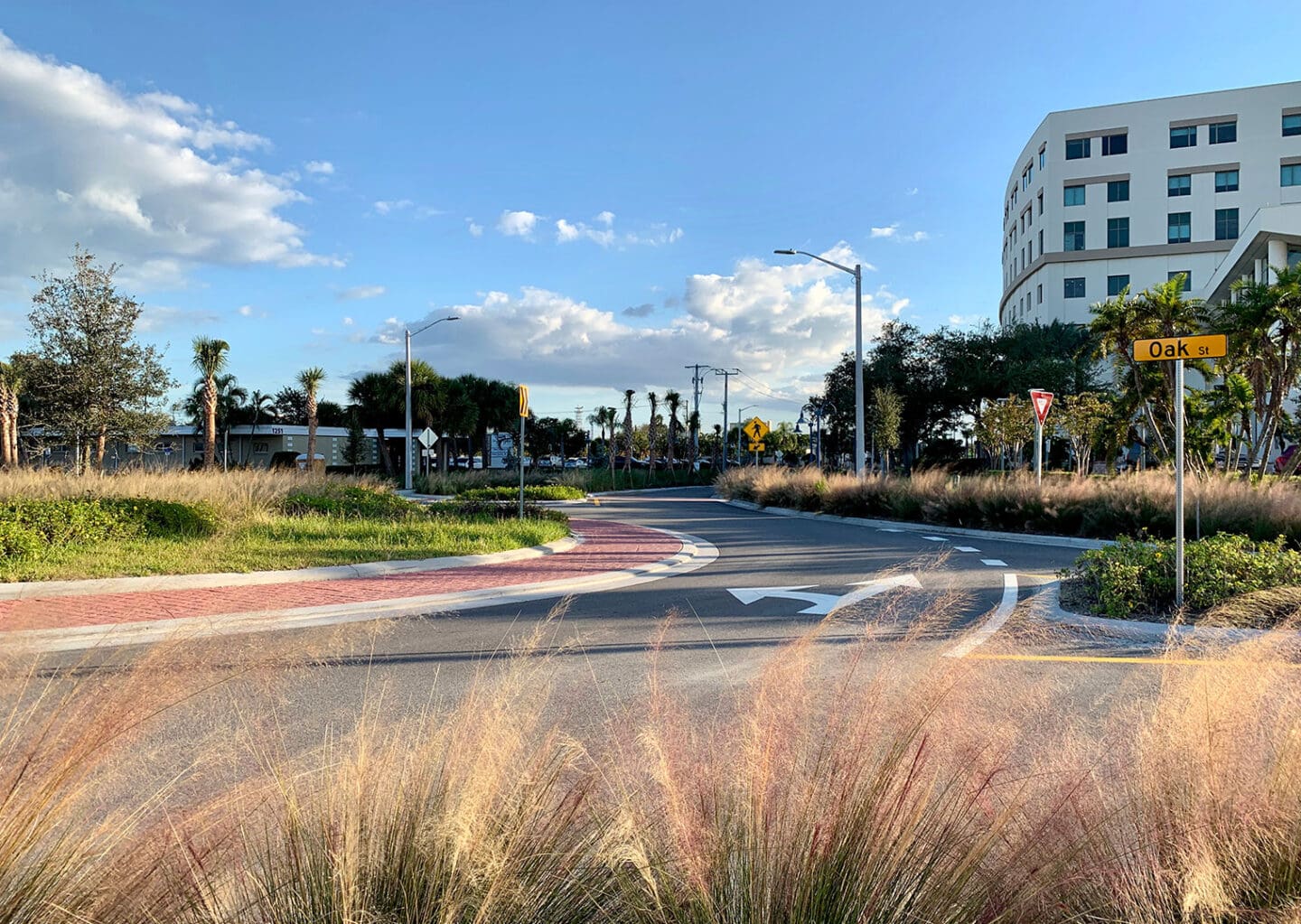January 31, 2024
While it’s not a stretch to consider how landscape architecture relates to transportation design, the most common misconception about landscape design is its role. Are street trees just there to beautify the street? Something that should be considered at the end if there is enough budget for aesthetics?
At Kittelson, we’re lucky to have a licensed landscape architect on our team. JP Weesner weaves together his knowledge of trees and transportation to help communities see the critical role of landscape in not just a road’s form, but also its function. “The landscape design is a systemic, functional aspect of how a roadway operates,” says JP.
Here are a few of the many ways trees impact the function of a roadway:
- Trees reduce driving speeds. Particularly when trees have grown to the point of forming canopies over a street, they encourage drivers to subconsciously lower their eyes and focus on the road in front of them, which results in slower driving. Conversely, when streets don’t have trees, the driver viewshed is wider, which can lead to increased speeds.
- Street trees provide shade, which not only makes people happy on hot days—it makes pavement happy, too! Because the pavement remains at a more stable temperature and thus is not expanding and contracting as drastically, it lasts much longer. The shade of urban street trees can add up to 40-60% more life to asphalt.
- There is an economic component to street trees. Businesses located on tree-lined streets can see up to 14% higher income streams than businesses in plazas or treeless streets.
- Trees help streets that are prone to flooding. Trees capture and absorb water, and their roots actually make soil more able to hold water so that it doesn’t run into the street.
- Trees create a sense of place, contributing to beautiful and memorable urban centers and neighborhood streets where people want to walk, bike, and spend time.
For an example, let’s look at Hickory Street in Melbourne, Florida. Prior to its redesign, Hickory Street commonly flooded, and drivers were hitting high speeds in front of the Holmes Regional Medical Center. The landscape design was critical on this project due to its potential to address both of those issues.
Along with raising the roadway about six inches and using pervious pavers for better drainage, we also designed plants for the water retention areas that absorb water and actually suck pollutants out of it to make it cleaner! To address high speeds, along with the installation of two roundabouts, we added trees in front of the hospital and along the whole corridor that narrow the the driver’s viewshed and create more awareness of pedestrians crossing the street. Since these improvements were constructed, Hickory Street hasn’t had any flooding issues, and safer speeds have been observed in front of the hospital. Learn more about this project here.

Plants along Hickory Street were chosen for their ability to absorb water and make it cleaner.

Trees in front of the hospital and along the whole corridor narrow the the driver’s viewshed.
As with all roadway elements in the right-of-way, street trees do require maintenance, but with proper planning—for example, using native and xeric species, adjusting spacing, and ensuring there is adequate soil volume for each given tree—the overall cost can be significantly reduced.
